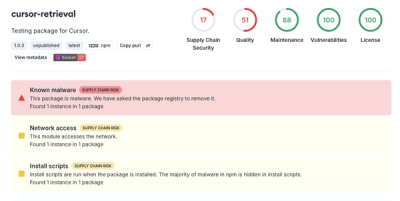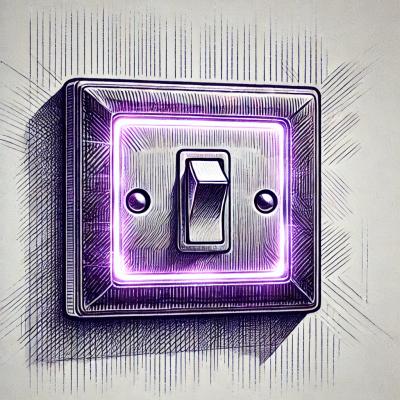
Security News
The Risks of Misguided Research in Supply Chain Security
Snyk's use of malicious npm packages for research raises ethical concerns, highlighting risks in public deployment, data exfiltration, and unauthorized testing.
github.com/sayden/groph
A WIP simple database library written in Go
This is more like a research project around an idea I had of making queries on a simple using callbacks than a serious simple database ready for production use.
You can load data in the graph by usin JSON or YAML data in "triples" format or a more advanced "extended" format:
go get -u github.com/sayden/groph
TODO
An example YAML simple format file:
- vertex: start
edge: goes to
d_vertex: B
- vertex: A
edge: goes to
d_vertex: finish
- vertex: A
edge: goes to
d_vertex: B
- vertex: B
edge: goes to
d_vertex: finish
- vertex: B
edge: goes to
d_vertex: A
- vertex: finish
edge: goes to
d_vertex: start
As you can see you just have to declare the source vertex, the destination vertex and an ID for the edge that connects them.
The JSON equivalent file would be like this:
[
{ "vertex": "start", "edge": "goes to", "d_vertex": "B" },
{ "vertex": "A", "edge": "goes to", "d_vertex": "finish" },
{ "vertex": "A", "edge": "goes to", "d_vertex": "B" },
{ "vertex": "B", "edge": "goes to", "d_vertex": "finish" },
{ "vertex": "B", "edge": "goes to", "d_vertex": "A" },
{ "vertex": "finish", "edge": "goes to", "d_vertex": "start" }
]
In the case of the extended format:
- vertex:
id: start
data:
description: starting point
edge:
id: goes to
data:
description: data in some edge
weight: 52.3
d_vertex:
id: A
- vertex:
id: A
edge:
id: goes to
weight: 52.3
d_vertex:
id: finish
- vertex:
id: A
edge:
id: goes to
d_vertex:
id: B
- vertex:
id: B
edge:
id: goes to
d_vertex:
id: A
- vertex:
id: B
edge:
id: goes to
weight: 52.3
d_vertex:
id: finish
In the extended format each vertex and edge can contain a "data" key with any value that you can consider inside. In this case the ID field is mandatory on each node of the YAML / JSON.
And the JSON equivalent:
[
{
"vertex": { "id": "start", "data":{ "description":"starting point" } },
"edge": { "id": "goes to", "data":{ "description":"data in some edge" }, "weight":52.3 },
"d_vertex":{ "id": "A" }
},
{
"vertex": { "id": "A" },
"edge": { "id": "goes to", "weight":52.3 },
"d_vertex":{ "id": "finish"}
},
{
"vertex": { "id": "A" },
"edge": { "id": "goes to" },
"d_vertex":{ "id": "B"}
},
{
"vertex": { "id": "B" },
"edge": { "id": "goes to" },
"d_vertex":{ "id": "A"}
},
{
"vertex": { "id": "B" },
"edge": { "id": "goes to", "weight":52.3 },
"d_vertex":{ "id": "finish"}
}
]
If you want a rock-solid simple database written in Go check Cayley
FAQs
Unknown package
Did you know?

Socket for GitHub automatically highlights issues in each pull request and monitors the health of all your open source dependencies. Discover the contents of your packages and block harmful activity before you install or update your dependencies.

Security News
Snyk's use of malicious npm packages for research raises ethical concerns, highlighting risks in public deployment, data exfiltration, and unauthorized testing.

Research
Security News
Socket researchers found several malicious npm packages typosquatting Chalk and Chokidar, targeting Node.js developers with kill switches and data theft.

Security News
pnpm 10 blocks lifecycle scripts by default to improve security, addressing supply chain attack risks but sparking debate over compatibility and workflow changes.